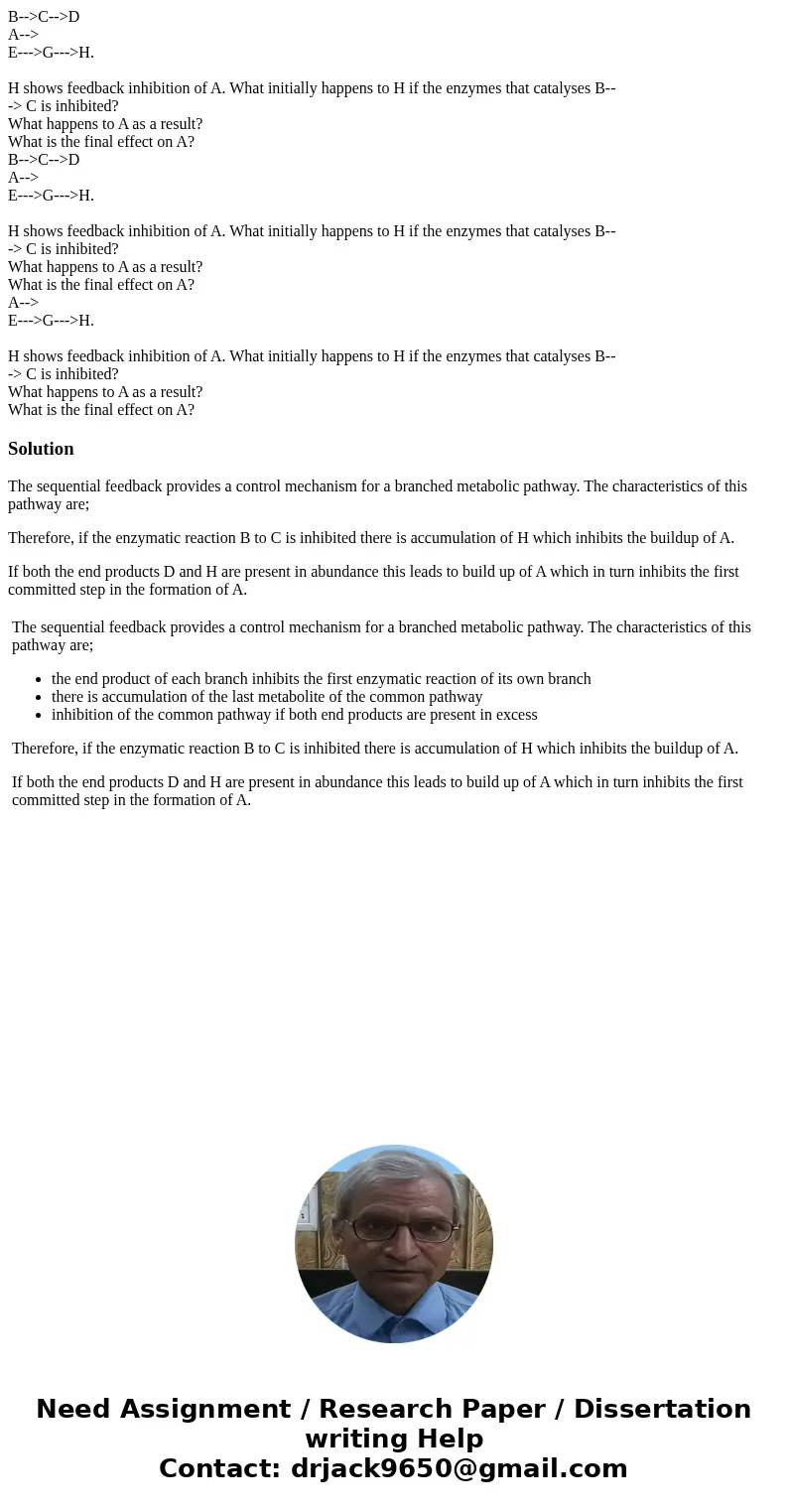BCD A EGH H shows feedback inhibition of A What initially ha
Solution
The sequential feedback provides a control mechanism for a branched metabolic pathway. The characteristics of this pathway are;
Therefore, if the enzymatic reaction B to C is inhibited there is accumulation of H which inhibits the buildup of A.
If both the end products D and H are present in abundance this leads to build up of A which in turn inhibits the first committed step in the formation of A.
| The sequential feedback provides a control mechanism for a branched metabolic pathway. The characteristics of this pathway are;
Therefore, if the enzymatic reaction B to C is inhibited there is accumulation of H which inhibits the buildup of A. If both the end products D and H are present in abundance this leads to build up of A which in turn inhibits the first committed step in the formation of A. |

 Homework Sourse
Homework Sourse